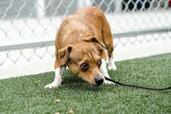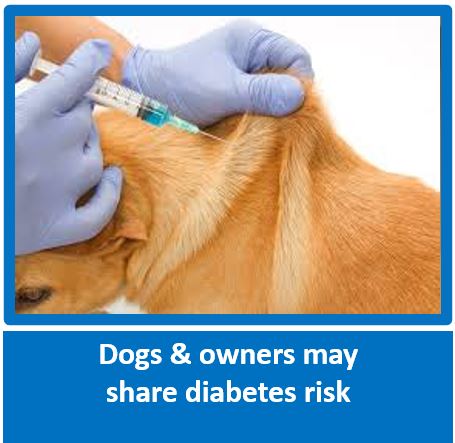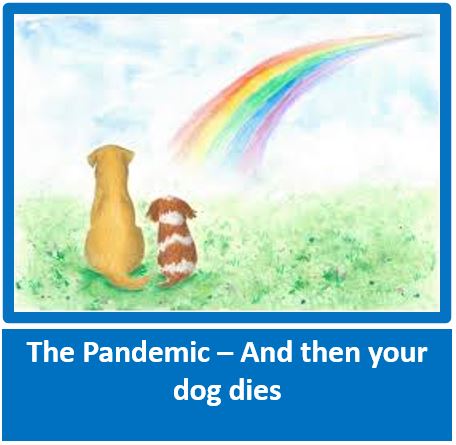
Please visit and LIKE / FOLLOW our Facebook Page and share with family, friends and on your own Facebook page, and ask them to share further – it is only by working together and sharing knowledge and education that we can improve the lives of dogs and assist owners. We do not inundate you with posts – an average of 5 per week, plus one Tip of the Week, and the odd informative post. Thank You!
Are you inadvertently flooding your dog?
by Friends of the Dog
by Friends of the Dog

Flooding, according to the dictionary,”is a technique in behavior therapy in which the individual is exposed directly to a maximum-intensity anxiety-producing situation or stimulus, either described or real, without any attempt made to lessen or avoid anxiety or fear during the exposure. An individual with claustrophobia, for example, might be asked to spend extended periods of time in a small room. Flooding techniques aim to diminish or extinguish the undesired response to a feared situation or stimulus and are used primarily in the treatment of individuals with phobias and similar disorders.”
In dog behaviour, Flooding is when dogs are forced to be in close proximity of something, they are afraid of for various periods of time, and are unable to escape the experience. The most common time it is used is when a dog is aggressive to other dogs and is put in an enclosure with other dogs, and heaven forbid, sometimes the dog is left in this situation for days at a time! Think about it, how would you feel if you had a fear of spiders and were forced to sit in a room full of them and could not get out! Does not bear thinking about – plus, we have a choice if we wanted to be in a room with spiders, our dogs are not offered a choice!
This really is an old-fashioned technique, however, unfortunately it is often still today, especially by trainers who use the old-fashioned punishment-based techniques. Trainers who engage in this practice often think that it has been successful as the dog stops the aggressive behaviour.
However, what has actually occurred, is that the dog has totally shut down (learned helplessness) – this is often the beginning of other behaviour concerns. What often happens as well, is that the dog will start to show aggressive behaviour – this may not happen at the time of the flooding as the dog is too shut down to react, but may occur at a later stage.
It really is much better to slowly and gradually desensitize the dog to the perceived fear – this is called systematic desensitization and is used with Positive Reinforcement methods.
So, how do owners inadvertently flood their dogs?
Here are some common examples, but the list does not end here.
Some very basic body language that a dog may exhibit if it is not coping, would be to look away completely (ignoring), try to make itself smaller, tail goes between the legs and the hindquarters lower, much like crouching, dog may try to hide behind the owner or behind an object, nervous barking, whining, breathing may increase, the dog may start to pant and even drool and whale eye can occur – this is when the white of the eyes is showing, and is often a prelude to a bite, and the dog may go very, very still with the body being stiff – this is also a sign that possible aggression may be forthcoming and is called the Stillness – this can be very dangerous.
If you are having problems with a dog that is fearful, we really suggest your contact a professional and get the help the dog needs.
In dog behaviour, Flooding is when dogs are forced to be in close proximity of something, they are afraid of for various periods of time, and are unable to escape the experience. The most common time it is used is when a dog is aggressive to other dogs and is put in an enclosure with other dogs, and heaven forbid, sometimes the dog is left in this situation for days at a time! Think about it, how would you feel if you had a fear of spiders and were forced to sit in a room full of them and could not get out! Does not bear thinking about – plus, we have a choice if we wanted to be in a room with spiders, our dogs are not offered a choice!
This really is an old-fashioned technique, however, unfortunately it is often still today, especially by trainers who use the old-fashioned punishment-based techniques. Trainers who engage in this practice often think that it has been successful as the dog stops the aggressive behaviour.
However, what has actually occurred, is that the dog has totally shut down (learned helplessness) – this is often the beginning of other behaviour concerns. What often happens as well, is that the dog will start to show aggressive behaviour – this may not happen at the time of the flooding as the dog is too shut down to react, but may occur at a later stage.
It really is much better to slowly and gradually desensitize the dog to the perceived fear – this is called systematic desensitization and is used with Positive Reinforcement methods.
So, how do owners inadvertently flood their dogs?
Here are some common examples, but the list does not end here.
- When there is a dog in a shelter environment that is terrified of humans, unfortunately people may go and sit in the dogs run (and on occasion just outside the run), believing that if they are there long enough the dog will overcome the fear. To us, at least, this is very similar being locked in a room with spiders!
Much better, that members of the staff slowly walked past the run, several times a day, and each time they passed, they tossed in a high-quality treat that the dog could retrieve after the person walked away. Slowly, the dog would start to associate these people with a positive experience, and then further work could be done to help the dog gain confidence and start to accept people into its critical space. - Feeding a fearful dog all its meals by hand – very similar to above and although it may sound good in principle, this is always flooding. There are ways and means whereby, using our bodies imitating what is called Calming or Appeasement Gestures, respecting the dog’s critical distance, and carefully watching the dogs own body language, and using a behaviour modification technique, we can help the dog to very slowly approach the human – working at its own pace – there is nothing worse than forcing a dog – it should always be the dog’s choice as to whether it wants to approach or not. As with the spider example, imagine if you were starving, but in order to get any food you had to take it from the spider!
- Dog parks, doggy walks – unless you have a confident and well socialized pup or dog, these should be avoided at all cost. To expose a dog to an experience such as this will just increase the dogs fear and possibly result in aggression – sorry, but the dog won’t just ‘get over it’! If we bear in mind that about 98% of aggression is fear based (just the behaviour the dog exhibits has escalated), then we can understand why the dog acted in an aggressive manner – the act of aggression had resulted in the perceived threat leaving, therefore the dog is more than likely to repeat the aggression as it worked.
- Pass the Puppy – this is an exercise that is practised at many puppy schools and is an excellent exercise IF the pup is confident around people and the people running the puppy school can recognize when a pup is not coping – unfortunately, this is not always the case. If the pup is nervous or fearful, we can think of very little that would be worse for a pup to be passed from person to person – a sure way to reinforce the pups fear and could well result in the pup nipping out of sheer fear or shutting down completely and increasing the pups fear of people.
- Forcing a pup or dog to approach an object it is fearful of – all that is achieved here is that the dog could shut down, you damage the human/canine bond, and on average the dog starts to become afraid of other objects as well. In a situation such as this, we would use systematic desensitization in order to help the dog to gain confidence and overcome its fear.
- Storm/Fireworks and noise fear – a hard one this, and often the dog that starts to jump up and down like a yoyo and attempt to catch the lightening (or firecrackers), is a dog that is already saying it is not coping. When a dog can’t cope, it very often goes into what is termed Fooling Around behaviour. These fears mentioned above all require gentle and systematic desensitization to help the dog overcome the fear.
- Going to the vet if the dog is fearful of same – this is often based on previous experiences and each and every time the dog is forced to go to the vet, the aggressive or fearful behaviour escalates. With some dogs, the only time they get into the car is to go to the vet and you often find that the dog starts to develop a fear of the car as well! As mentioned previously, situations such as this, plus dogs exhibiting fear at grooming parlours, can be overcome with systematic desensitization and some other behaviour modifications.
- Taking the pup or nervous dog to a busy area, such as a flea market, shopping centre – again, we are inadvertently flooding the dog and causing problems. With dogs such as this, we would gradually work on the dog being exposed to one or two people at a time and gradually building its confidence. What owners also do not always understand, is that the dog is also in a totally strange location, cannot get away, and this serves to increase the fear.
- Training schools, shows etc – if you do have a dog that shows fear or aggression in a training class or at a dog show, you are again, inadvertently flooding that dog. Rather systemized desensitization is used to slowly and gradually build the dogs confidence.
Some very basic body language that a dog may exhibit if it is not coping, would be to look away completely (ignoring), try to make itself smaller, tail goes between the legs and the hindquarters lower, much like crouching, dog may try to hide behind the owner or behind an object, nervous barking, whining, breathing may increase, the dog may start to pant and even drool and whale eye can occur – this is when the white of the eyes is showing, and is often a prelude to a bite, and the dog may go very, very still with the body being stiff – this is also a sign that possible aggression may be forthcoming and is called the Stillness – this can be very dangerous.
If you are having problems with a dog that is fearful, we really suggest your contact a professional and get the help the dog needs.




